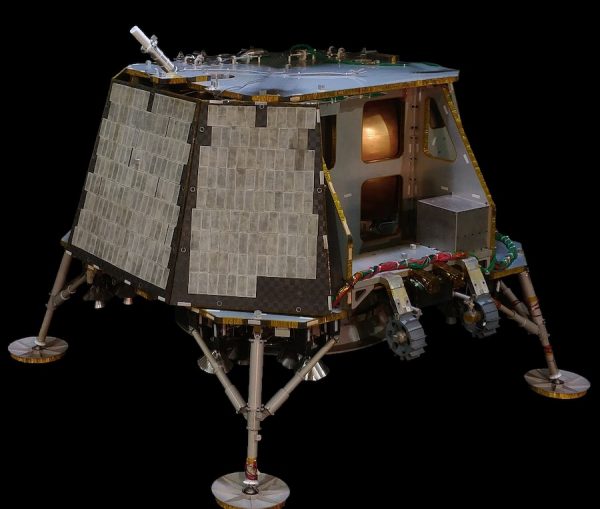NASA terminates lunar lander contract with OrbitBeyond – Spaceflight Now
EDITOR’S NOTE: Updated at 6 p.m. EDT (2200 GMT) with new CLPS on-ramp announcement.

NASA has terminated a $97 million contract with OrbitBeyond, a New Jersey-based company with plans to build robotic moon landers in Florida, just two months after announcing an agreement to send science instruments to the lunar surface as soon as next year.
OrbitBeyond notified NASA of “internal corporate challenges that will prevent the timely completion of its awarded task order,” the space agency said in a statement Monday.
NASA announced contracts with OrbitBeyond, Astrobotic and Intuitive Machines on May 31 worth a combined $253.5 million to fly science payloads to the moon on three commercial lander missions in 2020 and 2021.
At that time, OrbitBeyond said it could accomplish an unpiloted lunar landing in September 2020.
NASA said OrbitBeyond requested to be released from its task order agreement, and the space agency complied with the request. Officials terminated NASA’s task order with OrbitBeyond effective July 28, on “terms mutually agreeable to both parties,” the space agency said in a statement.
Officials did not release any other details about the reason for ending the contract.
NASA said the termination of OrbitBeyond’s contract does not affect the lunar landing missions planned in July 2021 by Astrobotic and Intuitive Machines.
OrbitBeyond remains one of nine companies eligible to compete for future lunar landing task orders under NASA’s Commercial Lunar Payload Services, or CLPS, program.
NASA selected the nine commercial providers last year to foster the development of privately-owned lunar landers, with the objective of achieving a regular cadence of robotic landings on the moon, similar to the model NASA introduced for cargo and crew transportation services to the International Space Station.
The CLPS program is also a precursor to NASA’s purchase of larger, human-rated lunar landers to ferry astronauts to the moon’s surface under the space agency’s Artemis program. NASA officials have described the CLPS program as an experiment to test contracting mechanisms and the readiness of commercial industry to take a larger role in a lunar exploration campaign.
“We know that CLPS missions are going to be challenging for various reasons, and they may not always succeed,” said Thomas Zurbuchen, head of NASA’s science mission directorate in Washington. “We’re willing to accept some risk in order to get back to the Moon quickly, with commercial partners, and do exciting science and technology development with broad applications.”
NASA announced Tuesday that it is inviting more U.S. companies to become CLPS providers through an “on-ramp” provision.
Under the terms of the canceled contract with NASA, OrbitBeyond’s Z-01 lander was supposed to carry up to four NASA payloads to the lunar surface, targeting touchdown in the moon’s Mare Imbrium region, a lava plain on the lunar near side.
The OrbitBeyond lander is based on a design developed by TeamIndus, an Indian team that once competed for the Google Lunar X Prize. TeamIndus is not eligible on its own to compete for CLPS contracts, which are open to U.S. companies.
OrbitBeyond planned to reuse the Indian team’s design for the Z-01 mission in 2020. The Z-01 landing craft will be about the size golf cart and will carry up to 90 pounds (40 kilograms) of payloads to the lunar surface.
Siba Padhi, OrbitBeyond’s president and CEO, said in May that the company was still in the process of securing full funding for development of the Z-01 lander. NASA’s contract with OrbitBeyond was designed to pay for services, and did not fund the lander’s up-front development costs, which must come from other sources outside of the CLPS program.
OrbitBeyond counts Ceres Robotics and Honeybee Robotics as key partners in its commercial lunar lander program.
The Z-01 lander mission was intended to launch as a secondary payload on a SpaceX Falcon 9 rocket.
Email the author.
Follow Stephen Clark on Twitter: @StephenClark1.






